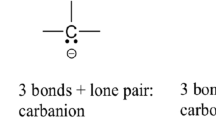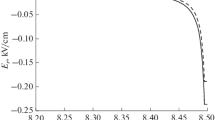Abstract—
The results of studying the influence of cosmic space on a spacecraft surface is presented. We showed that the mechanical (volume and surface), optical, and other characteristics of a spacecraft’s materials noticeably change due to long exposure to cosmic vacuum. At extremely low pressures in cosmic vacuum, the external and internal interfaces in the materials can be broken, resulting in either microscopic surface cracks or internal corrosion. We have shown that changes in the properties of surface layers cause changes in the volume mechanical properties of materials (fatigue strength, etc.). Furthermore, noticeable effects of space vacuum on the mechanical properties of a spacecraft’s materials arise as a result of the absence of oxide and other surface protective films. Due to the disappearance of protective gas and oxide films, and also as a result of sublimation of the surface layers to a thickness close to the wavelengths of electromagnetic radiation, the surface roughness is changed and, as a consequence, their optical characteristics (in particular, the absorption of solar radiation and the emissivity factor) are also changed. During orbital motion in sufficiently dense layers of the upper atmosphere of the Earth, as well as under bombardment by charged particles of cosmic radiation, strong plasma-chemical loosening of the surface material of spacecraft and its dispersion into the surrounding space can occur. This process is especially evident for the front (in the direction of travel) parts of spacecraft. The method used to describe the dynamics of the interaction of atomic oxygen colliding with the surface of silicon dioxide is described. The influence of space vacuum on materials is shown. Particular attention is paid to the phenomenon of accommodation of low-orbit satellite systems and the use of information received from satellites.










Similar content being viewed by others
REFERENCES
Avduevskii, V.S., Galitseiskii, B.M., Glebov, G.A., et al., Osnovy teploperedachi v aviatsionnoi i raketno-kosmicheskoi tekhnike: uchebnik dlya aviats. spetsial’nostei vuzov (Basics of Heat Transfer in Aviation and Rocket-Space Technology: Textbook for Aviation Specialties in Higher Education Institutions), Moscow: Mashinostroenie, 1992.
Voronich, I.V. and Mint, Z.M., Influence of features of gas–surface interaction on aerodynamic characteristics of space vehicles, Vestn. Mosk. Aviats. Inst., 2010, vol. 17, no. 3, pp. 59–67.
Avduevskii, V.S., Antonov, B.M., Anfimov, N.A., et al., Osnovy teorii poleta kosmicheskikh apparatov (Basics of Spacecraft Flight Theory), Moscow: Mashinostroenie, 1972.
Kuznetsov, V.D., Space weather and cosmic activity risks, Kosm. Tekh. Tekhnol., 2014, no. 3, pp. 3–13.
Akishin, A.I. and Novikov, L.S., Vozdeistvie okruzhayushchei sredy na materialy kosmicheskikh apparatov (Environmental Impact on Spacecraft Materials), Moscow: Znanie, 1983.
Nusinov, M.D., Vozdeistvie i modelirovanie kosmicheskogo vakuuma (Impact and Simulation of Cosmic Vacuum), Moscow: Mashinostroenie, 1982.
Meshcheryakov, S.A., The problem of the ISS protection from collision with space debris particles, in Okolozemnaya astronomiya i problemy izucheniya malykh tel Solnechnoi sistemy (Near-Earth Astronomy and Problems in the Investigation of Small Bodies in the Solar System), Moscow: Kosmosinform, 2000, pp. 302–307.
Kalashnikov, V.V., Ibatullin, I.D., Ganigin, S.Yu., et al., Research and development of efficient pulse instruments on the basis of energy-saturated materials for the modification of machinery surfaces by high-speed particle fluxes, Izv. Samar. Nauchn. Tsentra Ross. Akad. Nauk, 2012, vol. 14, no. 1, pp. 615–619.
Sidnyaev, N.I., Obtekanie giperzvukovykh letatel’nykh apparatov v usloviyakh poverkhnostnogo razrusheniya (Flow around Hypersonic Spacecraft under Surface Failure), Moscow: FIZMATLIT, 2016.
Inzhenernyi spravochnik po kosmicheskoi tekhnike (Handbook of Space Technology for Engineers), Solodov, A.V., Ed., Moscow: Voenizdat, 1969.
Sidnyaev, N.I., Makridenko, L.A., Gecha, V.Ya., et al., Problemy akkomodatsii nesushchikh poverkhnostei nizkoorbital’nykh kosmicheskikh sistem, in Tezisy dokladov Chetvertoi mezhdunarodnoi nauchno–tekhnicheskoi konferentsii “Aktual’nye problemy sozdaniya kosmicheskikh sistem distantsionnogo zondirovaniya Zemli” (Abstracts of Presentations at the Fourth International Scientific and Technical Conference “Current Problems in the Development of Space Systems of Remote Sensing of the Earth”), Moscow: Korporatsiya VNIIEM, 2016, pp. 59–62.
Kovalev, V.A., Geterogennye kataliticheskie protsessy v aerotermodinamike (Heterogeneous Catalytic Processes in Aerothermodynamics), Moscow: FIZMATLIT, 2002.
Sidnyaev, N.I., Makridenko, L.A., Gecha, V.Ya., et al., Aeromechanics of low-orbit space vehicles, in Tezisy dokladov Chetvertoi mezhdunarodnoi nauchno–tekhnicheskoi konferentsii “Aktual’nye problemy sozdaniya kosmicheskikh sistem distantsionnogo zondirovaniya Zemli” (Abstracts of Presentations at the Fourth International Scientific and Technical Conference “Current Problems in the Development of Space Systems of Remote Sensing of the Earth”), Moscow: Korporatsiya VNIIEM, 2016.
Kovalev, V.L., Balat-Pichelin, M., Kolesnikov, A.F., and Krupnov, A.A., Analysis of the influence of incomplete accommodation of recombination energy on heat flows to space vehicles, in Sovremennye problemy matematiki i mekhaniki (Modern Problems in Mathematics and Mechanics), vol. 2: 2009, vol. 2: Mekhanika (Mechanics), Moscow: MGU, 2009, pp. 101–111.
Kovalev, V.L. and Kolesnikov, A.F., Experimental and theoretical simulation of heterogeneous catalysis in aerothermochemistry (a review), Fluid Dyn., 2005, no. 5, pp. 669–693.
Sidnyaev, N.I., A study of the destruction of spacecraft surfaces at contact interactions with microparticles of the space environment, Cosmic Res., 2018, vol. 56, no. 3, pp. 213–222.
Andreichuk, O.B. and Malakhov, N.N., Teplovye ispytaniya kosmicheskikh apparatov (Thermal Tests of Spacecraft), Moscow: Mashinostroenie, 1982.
Author information
Authors and Affiliations
Corresponding author
Additional information
Translated by E. Seifina
Rights and permissions
About this article
Cite this article
Sidnyaev, N.I., Klimova, N.S. Changes in the Surface and Volume Properties of a Spacecraft during Absorption and Recombination of Oxygen and Nitrogen Atoms. Cosmic Res 58, 167–180 (2020). https://doi.org/10.1134/S0010952520030077
Received:
Revised:
Accepted:
Published:
Issue Date:
DOI: https://doi.org/10.1134/S0010952520030077




